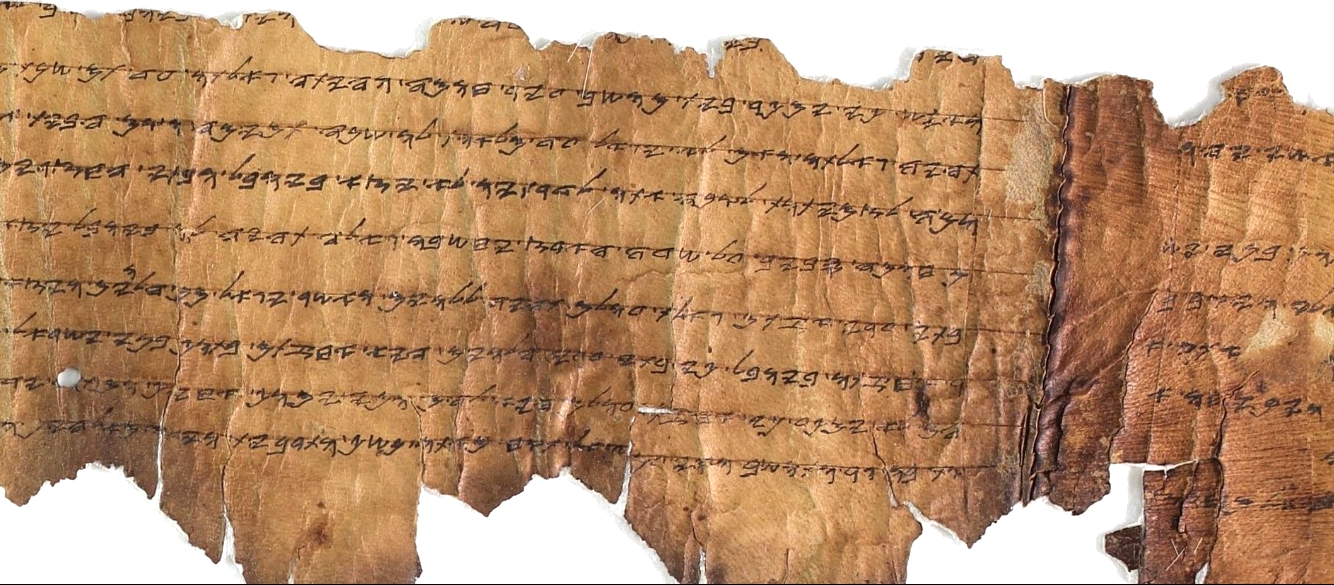Today’s daf takes us in some very strange directions. It all started two days ago. The mishnah at the bottom of 6b states:
The difference between the first Adar and the second Adar is only the reading of the megillah and gifts to the poor.
Because Judaism follows a lunar-solar calendar, some years contain a leap month. In this case, Purim is observed in the second Adar. This statement, that only in the second Adar do we read megillah and give gifts to the poor, leads the mishnaic rabbis to continue listing other things that are related but different, and most of that discussion takes place on today’s daf. The discussion of differences takes us from discussions of various kinds of vows to offerings to bodily emissions, and from there to discussions of leprosy, before ending up discussing something slightly more relevant in the post-Temple period:
The difference between scrolls, tefillin and mezuzahs is only that scrolls are written in any language, whereas tefillin and mezuzahs are written only inAshurit.
With your help, My Jewish Learning can provide endless opportunities for learning, connection and discovery.
Rabban Shimon ben Gamliel says: Even with regard to scrolls, the sages permitted them to be written only in Greek.
Scrolls, tefillin and mezuzahs are all different sizes and are used in different ways: Torah scrolls and megillot are usually large and are treated as objects to be carried and read from; tefillin are small scrolls sealed inside leather boxes and worn on the heads and arms of many Jews during prayer; mezuzahs are small scrolls inside usually decorative boxes of some kind, and affixed to the doorpost. This mishnah focuses on one key area of commonality: they all contain pieces of parchment on which verses from the Torah (or the whole Torah, in the case of some scrolls) are written. What makes them different, according to the mishnah, is that tefillin and mezuzot can only be written using the Ashurit script.
What’s that? Weirdly enough, it’s what today you probably think of as “Hebrew script.” Ancient Israelites wrote their Hebrew using a script that today scholars call paleo-Hebrew. This script doesn’t look like modern Hebrew; to be honest, it looks a little more like chicken scratch to me. At some point during or after the Babylonian exile, the exiles begin to write their Hebrew down using the Aramaic alphabet, otherwise known as Ashurit script. Paleo-Hebrew didn’t disappear right away, but slowly, its use died out as it was replaced by Ashurit.

And as the mishnah on today’s daf shows, eventually that replacement was halakhically required! By the time of the Mishnah, tefillin and mezuzot were only “kosher” if written in Ashurit. In fact, the medieval commentator Rashi glosses the word Ashurit in today’s mishnah as lashon hakodesh, the holy tongue. But there was a difference of opinion as it related to Torah scrolls: the original speaker in the mishnah seems to think that they could be written in any language (including the original Paleo-Hebrew), while Rabban Shimon ben Gamliel thinks they can only be written in Greek, the lingua franca of his day!
The Gemara offers two more similarities between these three kinds of texts:
or the matter of stitching with sinews, and rendering the hands impure, this and that are equal.
The parchments used for Torah scrolls, mezuzot and tefillin must all be stitched together by sinews, and not a plant-based thread, and they all have the status of sacred. According to some rabbis at the time, the sacred status of the scrolls leads those who touch them to have hands considered ritually impure when the Temple stood.
The Gemara is going to continue to discuss questions of language and script on the next page. But for today, I am reminded of something I heard a lot when traveling across Thailand years ago: “same same but different.” And that is exactly what the mishnah here is saying.
Read all of Megillah 8 on Sefaria.
This piece originally appeared in a My Jewish Learning Daf Yomi email newsletter sent on December 20th, 2021. If you are interested in receiving the newsletter, sign up here.



